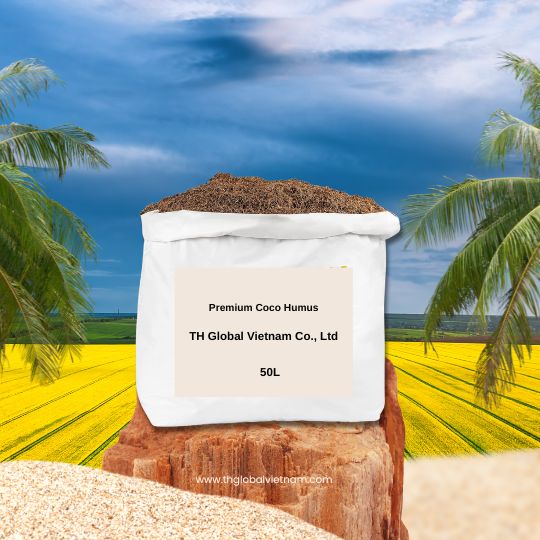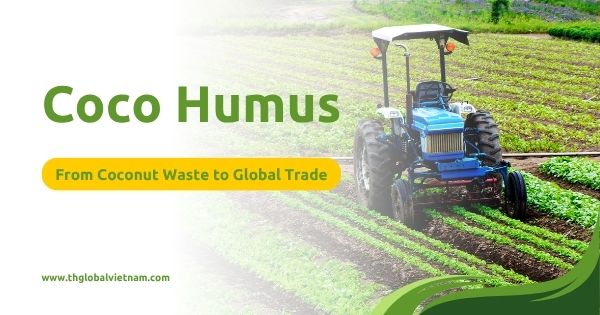Every year, millions of coconut shells and husks are discarded as agricultural waste. But in the hands of innovative manufacturers, this “waste” becomes a valuable resource for global agriculture — Coco Humus. As sustainable farming grows in popularity, understanding the Coco Humus production process helps importers, distributors, and farmers see why this product is both eco-friendly and profitable. Let’s trace the journey of Coco Humus — from raw coconut waste to a key export commodity reshaping organic farming worldwide.
Step 1: Sourcing Raw Coconut Husk
The journey begins in tropical countries like Vietnam, where producers process coconut for oil, water, and coir. The leftover husks are collected rather than discarded. These husks contain lignin and cellulose — ideal materials for producing high-quality Coco Humus.
At this stage, we clean and shred the husks into smaller fibers, preparing them for composting.
Learn more about TH Global Vietnam’s Coco Humus collection process.

Step 2: Composting and Microbial Breakdown
The Coco Humus manufacturing process begins with composting shredded coconut husks under controlled temperature and moisture conditions. Over several weeks, beneficial microbes decompose the fibers, transforming them into rich organic matter.
This natural process reduces salinity, balances pH, and enhances the humus’s microbial life — key qualities that make it an ideal soil amendment.
According to FAO’s organic composting guidelines, microbial decomposition is essential for producing nutrient-stable organic humus.
Step 3: Drying and Screening
After composting, workers dry the materials to reduce moisture (usually below 20%) and screened to remove impurities. This ensures a consistent Coco Humus texture that’s easy to mix with soil or potting media.
Different particle sizes are through production depending on the customer’s needs — from fine powder for seedlings to coarse granules for greenhouse use.
See how growers apply our product in How to Apply Coco Humus for Maximum Crop Yield.
Step 4: Packaging for Export
Once the Coco Humus reaches optimal moisture and quality standards, we compress them into blocks, big bags, or retail packs for export. Each shipment undergoes strict quality control for moisture, pH, and salt content before export.
À TH Global Vietnam, we offer flexible packaging options — from 25 kg bags to 1-ton jumbo bags — and provide export documentation (CO, MSDS, Phytosanitary Certificate).

Step 5: Global Distribution and Use
From Asia to Europe and the Middle East, Coco Humus is exported to farmers, greenhouse operators, and distributors who use it as an organic soil amendment. Its ability to improve aeration, water retention, and soil fertility makes it a preferred choice in sustainable agriculture.
Read also: Global Demand for Coco Humus: Why Distributors Are Investing in 2025.
The Coco Humus production process represents innovation and sustainability at its best — transforming coconut waste into a high-value agricultural product. From careful composting to global export, each step supports both farmers and the environment.
By choosing Coco Humus, importers and distributors not only tap into a growing market but also contribute to a circular economy that turns agricultural waste into global value.
Partner with TH Global Vietnam for high-quality, export-ready Coco Humus solutions.

